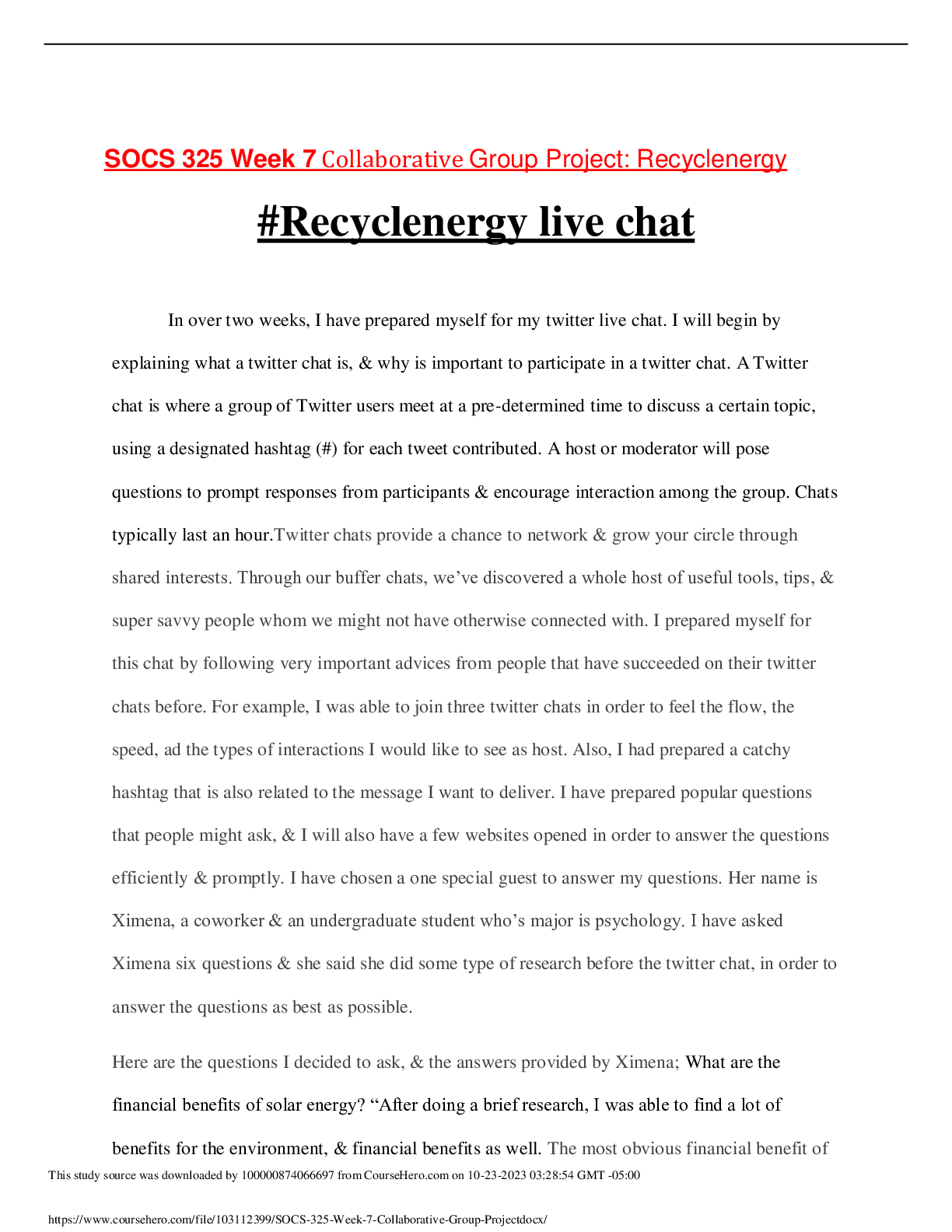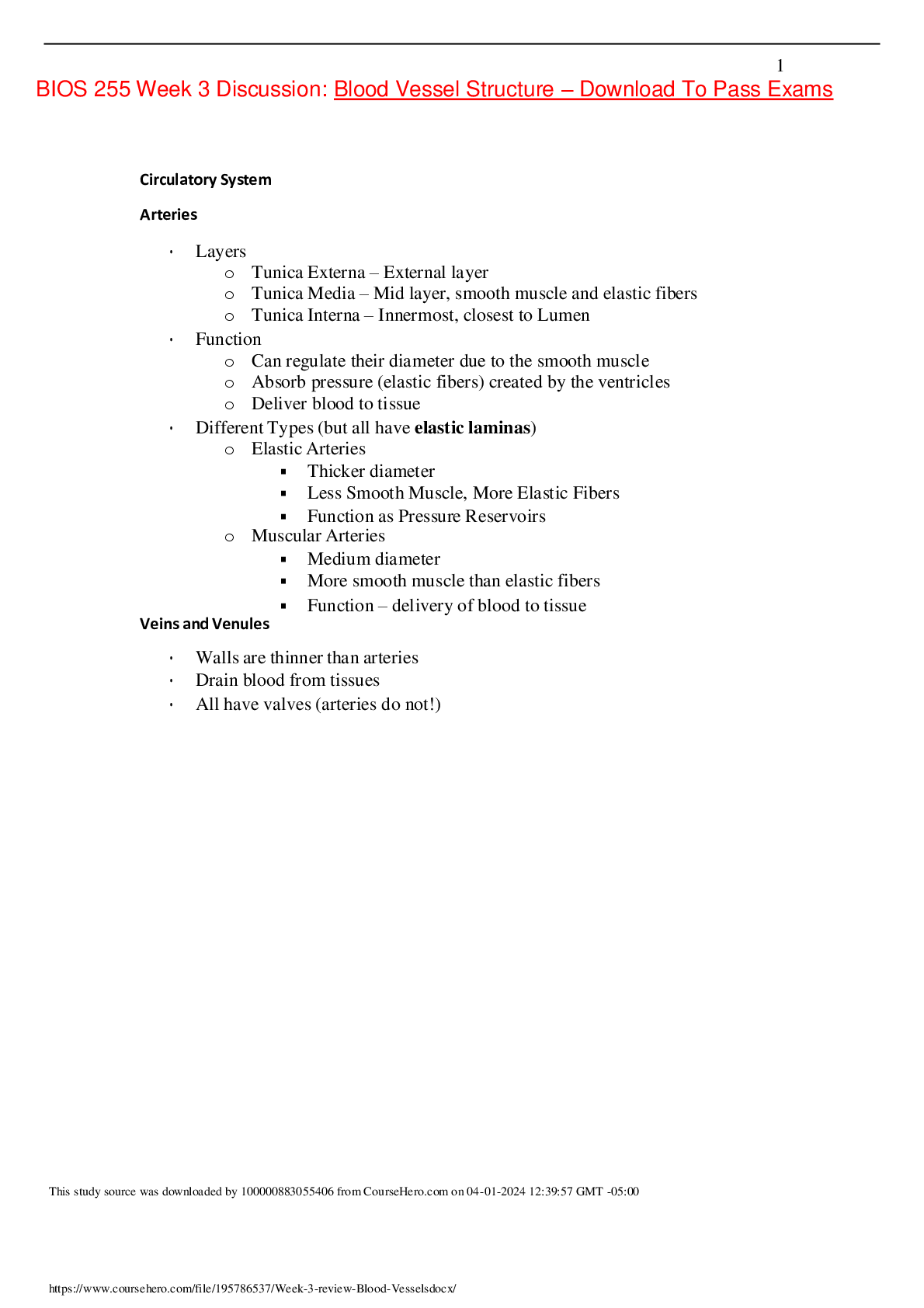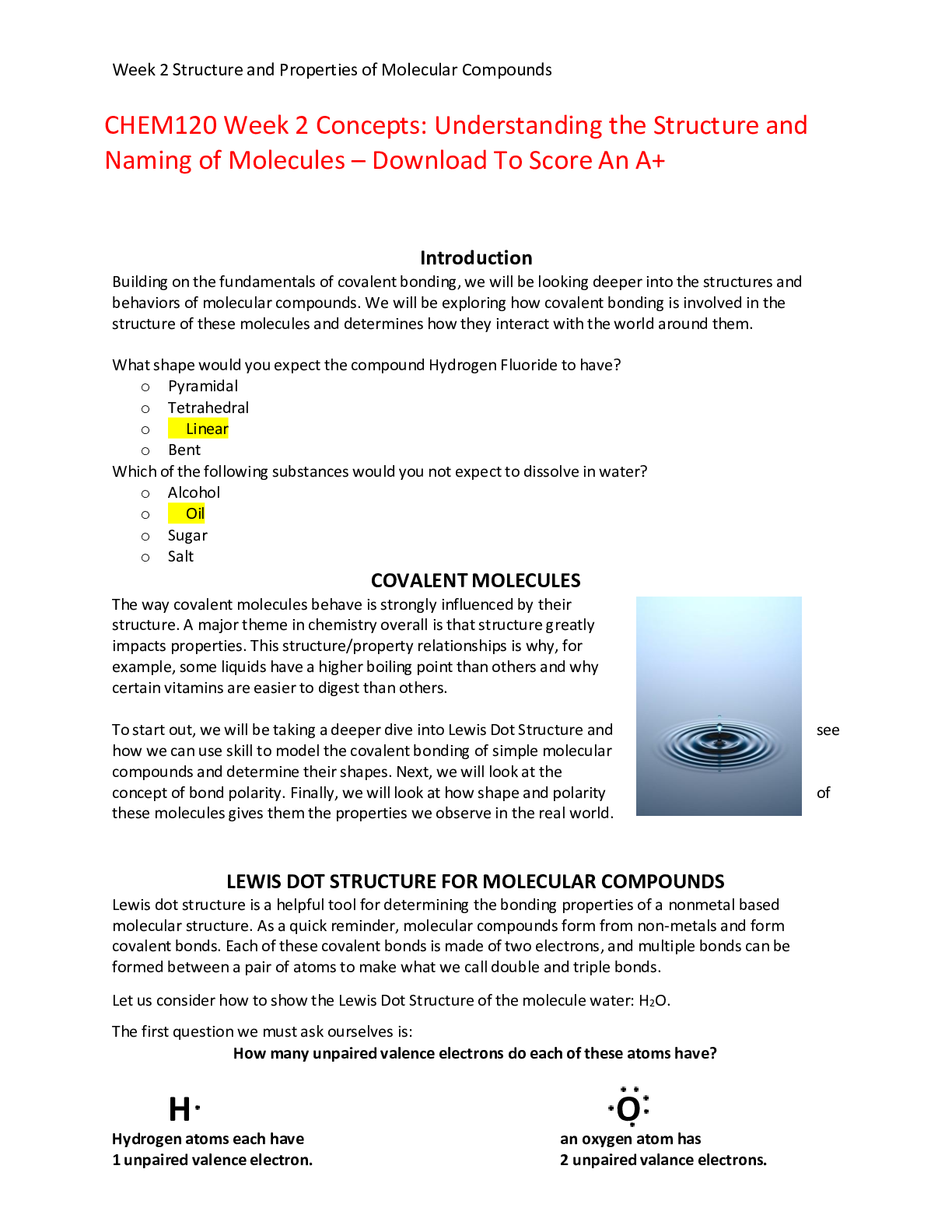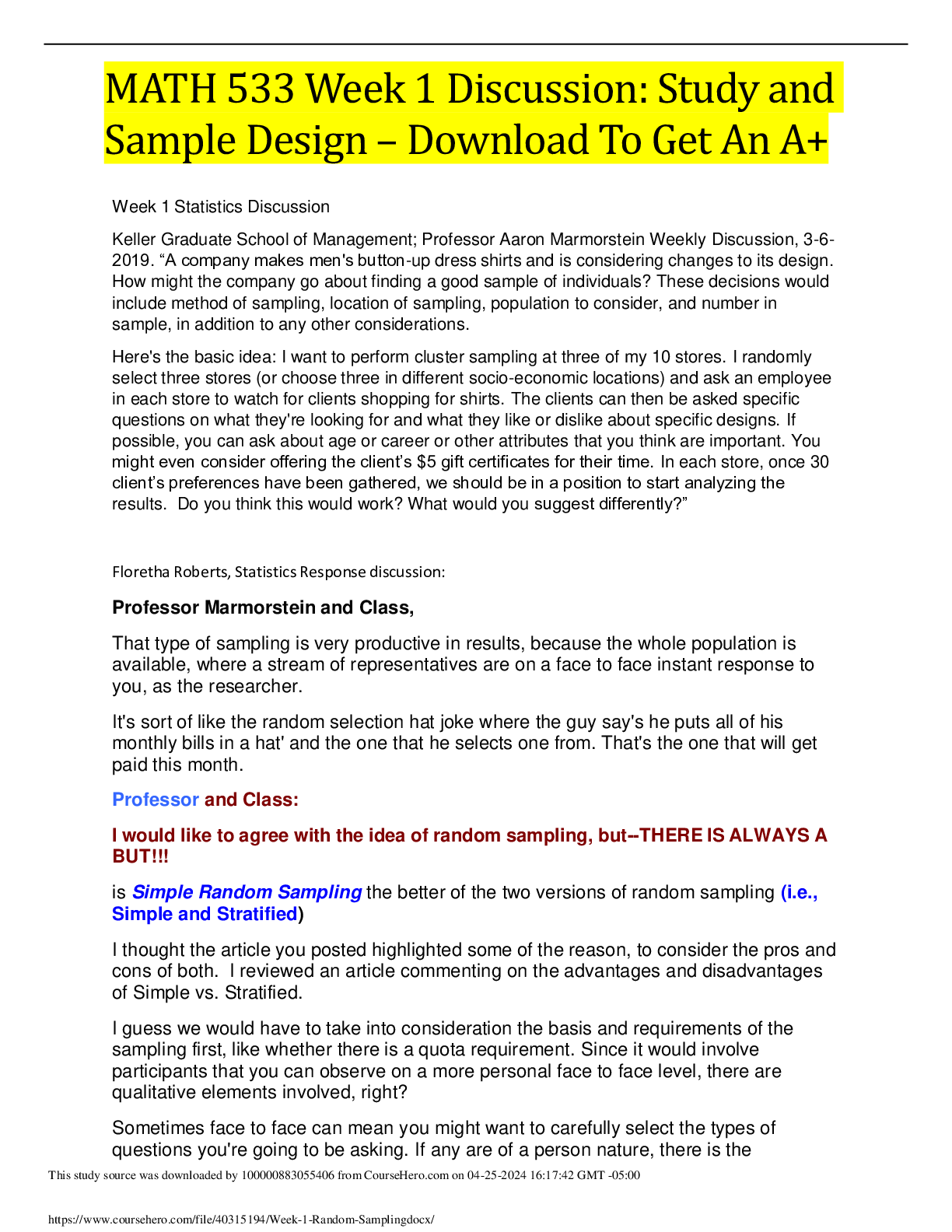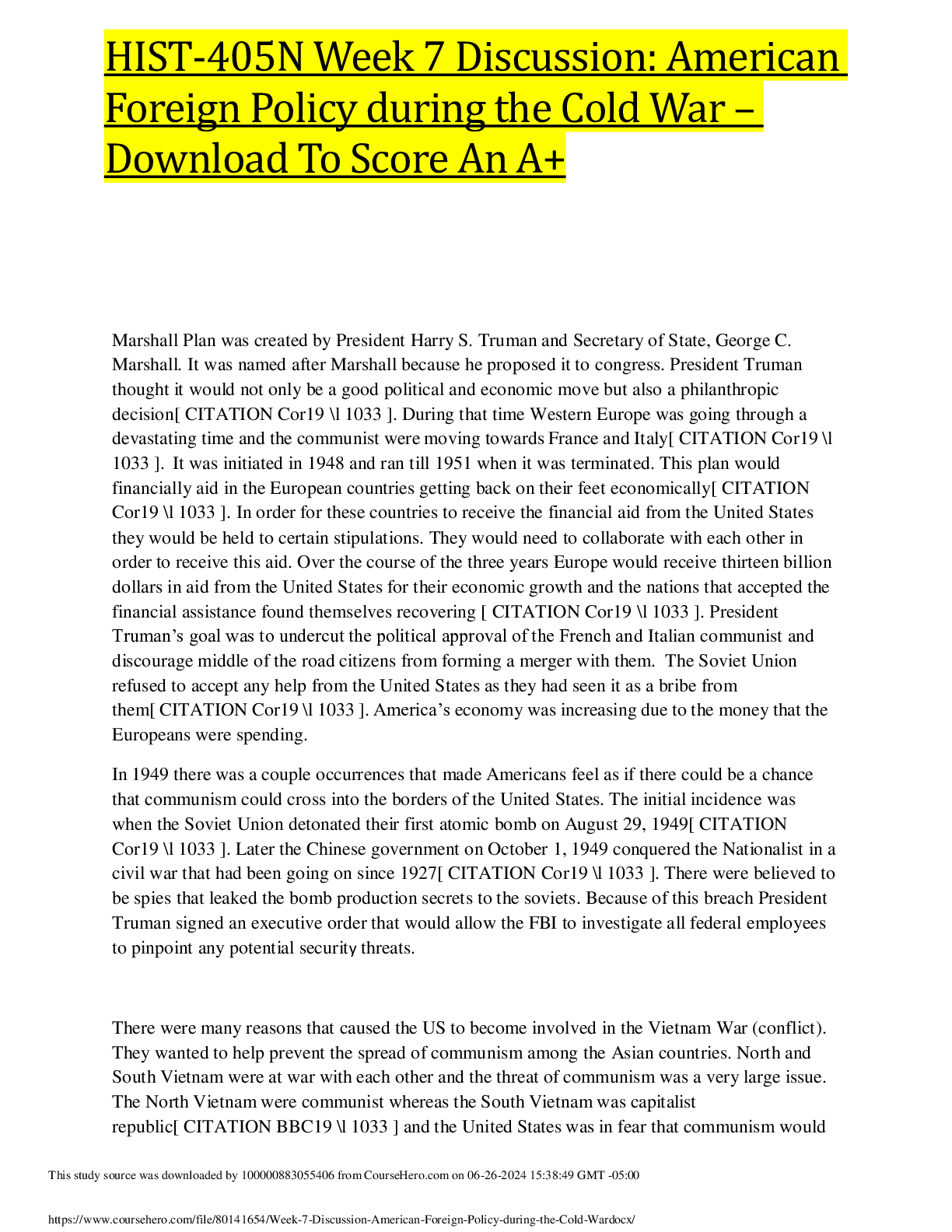Chemistry > DISCUSSION POST > CHEM120 Week 3 Concepts: Chemical Reactions and Calculations – Download To Score An A+ (All)
CHEM120 Week 3 Concepts: Chemical Reactions and Calculations – Download To Score An A+
Document Content and Description Below
CHEM120 Week 3 Concepts: Chemical Reactions and Calculations – Download To Score An A+ OL Lab 3: Stoichiometry: Avogadro’s number and molecular calculations / Solution Preparation: From salt to... solution Learning Objectives: • Explain the relationship between mass, molecular weight, and numbers of atoms or molecules and perform calculations deriving these quantities from one another • Perform mass-to-mass stoichiometric calculations via conversions to moles • Identify the limiting and excess reagents in a chemical reaction • Calculate the theoretical, actual and percent reaction yield • Define Avogadro’s number and describe the mole quantification of matter • Explain relationship between mass, molecular weight, and numbers of atoms or molecules • Perform conversion and derivations calculations using key molecular quantity parameters • Define Avogadro’s number and describe the mole quantification of matter How many moles of sand grains has the Sahara desert? What is the only equation you´ll ever need in chemistry? The short stoichiometry simulation will help you answer those questions! Follow the footsteps of great chemists and learn about key molecular parameters based on one and only star of chemistry calculations: Avogadro’s Law! Concept mole and Avogadro’s Law: Your first mission in this short simulation is to familiarize yourself with the concept of mole and the way of counting molecules of substances using the one and only Avogadro’s Law. You will learn how to convert huge numbers of particles into handy Avogadro’s number, extensively used by all chemists around the world! Chemical units relationship: Next, you will explore the relationship between mass, molecular weight, and number of atoms. This magical equation will enable you to perform derivations of molecular quantity parameters for various chemical substances. You will feel like Marie Curie analysing chemical dependencies of chemicals in her french laboratory! Part 1: Complete the Labster lab: Stoichiometric calculations: Identify an unknown compound using gravimetric analysis Glassware and quantitative transfer Moving on to the second workbench, you will explore and determine what glassware will be appropriate for you to use. Your lab guide and mentor, Dr. One, will walk you through the process of preparing the solution. You will have the freedom to use the equipment as you like, but only by following Dr. One’s instructions will you be successful in making the right solution. To make sure you can always redo the essential steps of the process, Dr. One will provide you with a fantastic reset button, so you can try again if you make a mistake. Solve the preparation In the end, only by carefully ensuring that the right amount of water and ammonium chloride is used can you make the correct solution. Are you prepared for solving how to perform a Solution Preparation? Part 1: Complete the Labster Lab: Stoichiometry: Avogadro’s number and molecular calculations Complete all activities and answer all questions within the lab and then complete the questions below: Purpose: Describe in complete sentences and in your own words, the purpose of this experiment. Answer: The purpose of this simulation was to learn how to create a solution. Also, with creating this solution determining the molar concentration of the solution and calculating molar mass. Always remember that is you miscalculated measurements it would be best to start completely over to ensure accuracy. Observations: Record three observations from the simulation. I. I was able to observe a chemical change when NaCl is mixed with water, is very soluble in water, and it’s best to add water to your beaker prior to transferring to the volumetric flask via a beaker. II. When transferring from a weighing dish to a beaker you should always rise the dish with solution to ensure all that was weighed is transferred for the accuracy of your experiment. Also, ensure to rinse the beaker with solution after transferring to the volumetric flask. III. I learned how to measure using a volumetric flask, concave meniscus, calibration marks on a flask, and how to properly store a solution. 1. How do you convert between grams and moles of a specific molecule? Give a specific example to illustrate. Answer: CO2 C = 12.0107g O = 15.9994g 12.0107g + 2(15.9994) = 44.01g/mol 575g x 1mol / 44.01g = 13.07 moles Meaning there are 13.07 moles in 575g of CO2 2. How do you convert between moles of one substance and moles another substance? Answer: To convert between moles of one substance and moles of another substance you have to comparing the mole ratios of a balanced chemical equation. 3. Balance the following chemical equation: Na2CO3(aq) + CaCl2(aq) → CaCO3(s) + NaCl(aq) Answer: Na2CO3(aq) + CaCl2(aq) = CaCO3(s) + 2 NaCl(aq) 4. Use the balanced chemical equation from the last question to solve this situation: You combine 0.5 moles of Na2CO3 with enough CaCl2 that your compound reacts completely. How many moles of NaCl would you expect this reaction to produce? Show all work below. Answer: I would expect to have 1 mole of NaCl is I has 0.5 moles of Na2CO3. Currently based of the equation Na2CO3 has 1 mole in it’s current state and 2NaCl. If you were to reduce the Na2CO3 from 1 mole to 0.5 moles the NaCl would decrease also. Part 2: Complete the Labster Lab: Solution Preparation: From salt to solution Complete all activities and answer all questions within the lab and then complete the questions below: 1. In this lab, you learned how to prepare solutions with a precise concentration. Where in your nursing career might this skill be needed? Answer: Within my nursing career this skill might be used with medication delivery, wound care treatment, and IV solution/injections. 2. Which piece of glassware did you use to prepare your solution in this lab and why? Answer: Volumetric flask was used because it’s ideal for mixing different substances in, and it has the precision we needed for this experiment. 3. Calculate how many grams of NaCl are required to make 100 mL of a 1 M NaCl solution. Show your work in the space below. Answer: There I 1mole of solution in 1M NaCl solution. 1 mole =58.44g Formula: # of moles /molar mass/volume x 100 X = 58.44g /100 x 100 X = 58.44g Reflection: Consider what you learned from these simulations. Reflect on three to four key concepts that you learned in this lab exercise. How could the lessons learned in this virtual lab relate to a real world situation in the community/world or your future career? Be specific in your answer (this should require 5-10 sentences). Answer: Some key concepts that I learned during this lab experiment was how to calculate the molar mass, molarity, and how to create a solution in a volumetric flask. The way I was able to use this experiment to work through examples outside of the assigned text helped me get a bit of a better understanding. I’m still a bit confused but it will get better the more I practice. The way this virtual lab can relate to a real-world situation in my future career because as a nurse we will be required to mix IV solutions that are administered to patients. We must know the proper steps to do this, how to factor the grams of the medication verses the amount of IV solution to ensure it’s not diluted. This helps ensure what was prescribed by the doctor is give at the correct dosage. Grading Rubric: Activity Deliverable Points Part I Complete Simulation Stoichiometry: Avogadro’s number and molecular calculations 10 Part II Complete Simulation Solution Preparation: From salt to solution 10 Part III Complete lab report and answer questions • Observation (3 points) • Purpose (1 point) • Questions (7 points) • Reflection (4 points) 15 Total Complete all lab activities 35 [Show More]
Last updated: 1 year ago
Preview 1 out of 5 pages

Buy this document to get the full access instantly
Instant Download Access after purchase
Buy NowInstant download
We Accept:

Reviews( 0 )
$12.00
Can't find what you want? Try our AI powered Search
Document information
Connected school, study & course
About the document
Uploaded On
Apr 19, 2024
Number of pages
5
Written in
Additional information
This document has been written for:
Uploaded
Apr 19, 2024
Downloads
0
Views
64

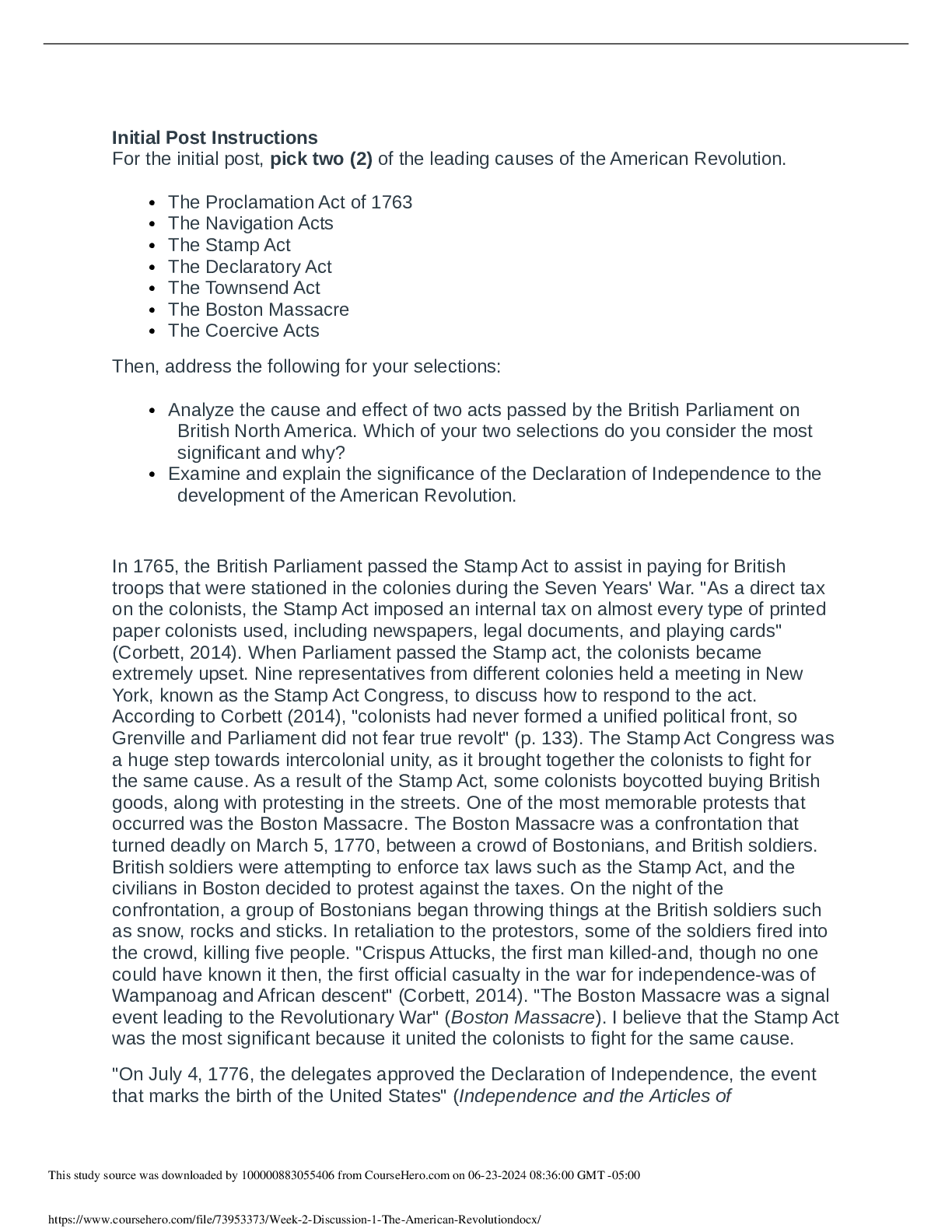
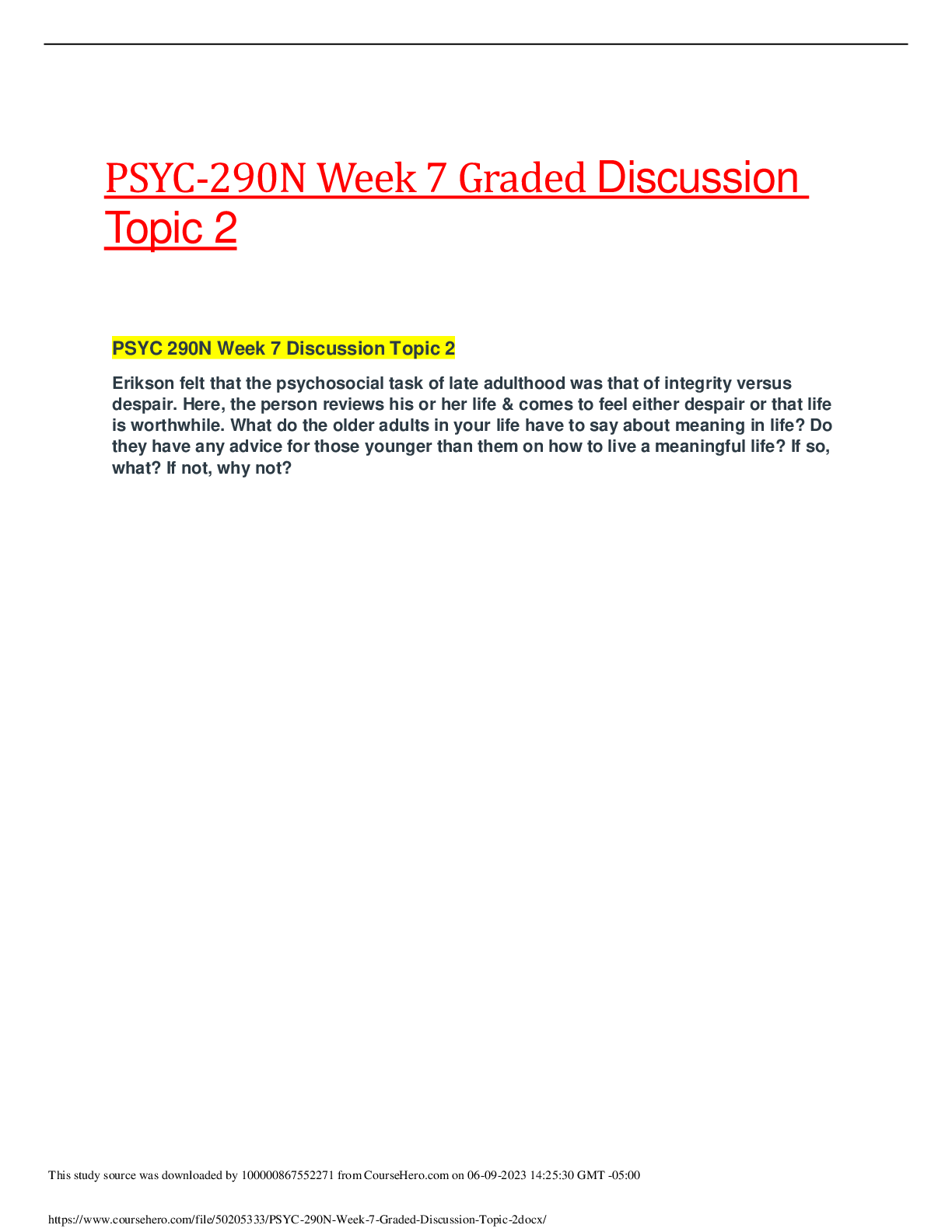
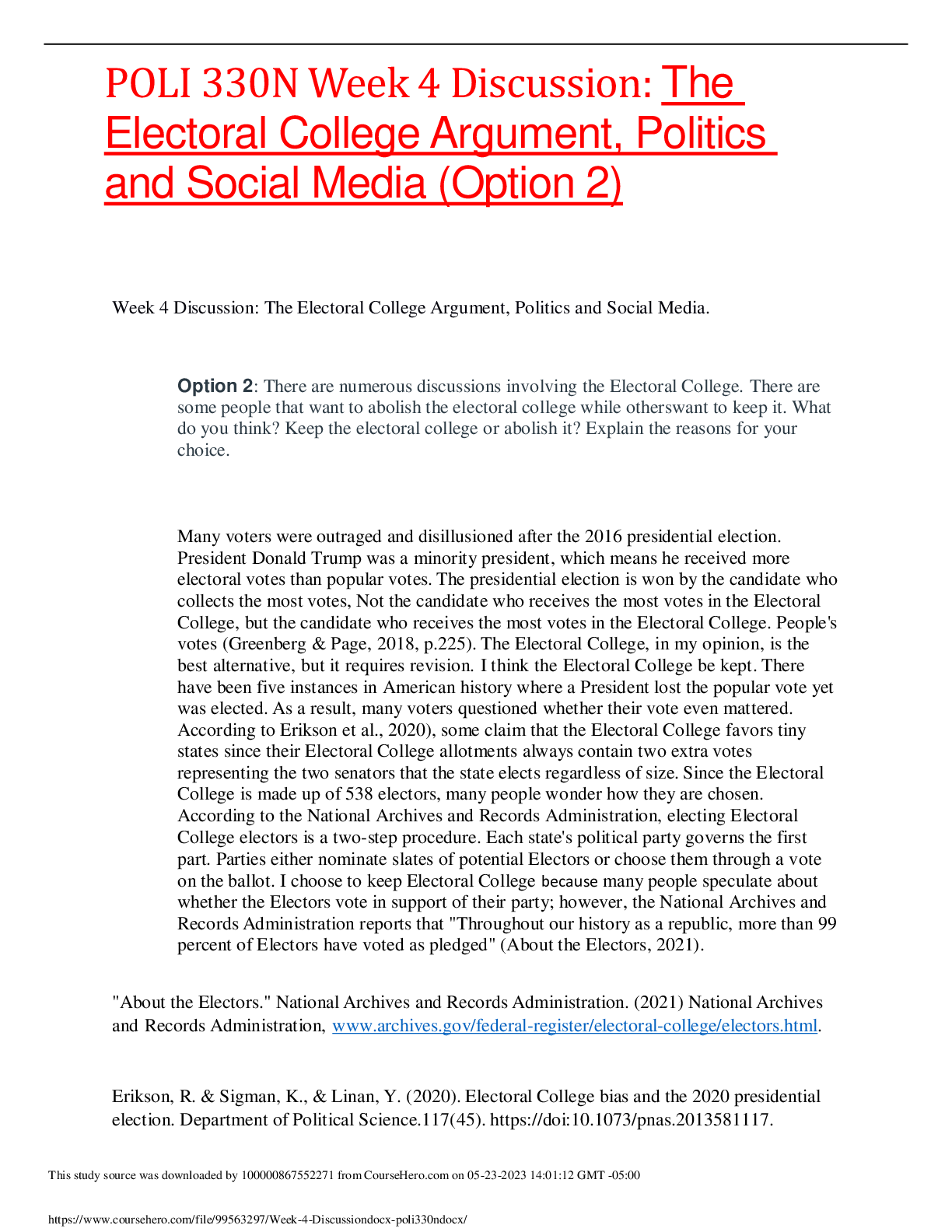

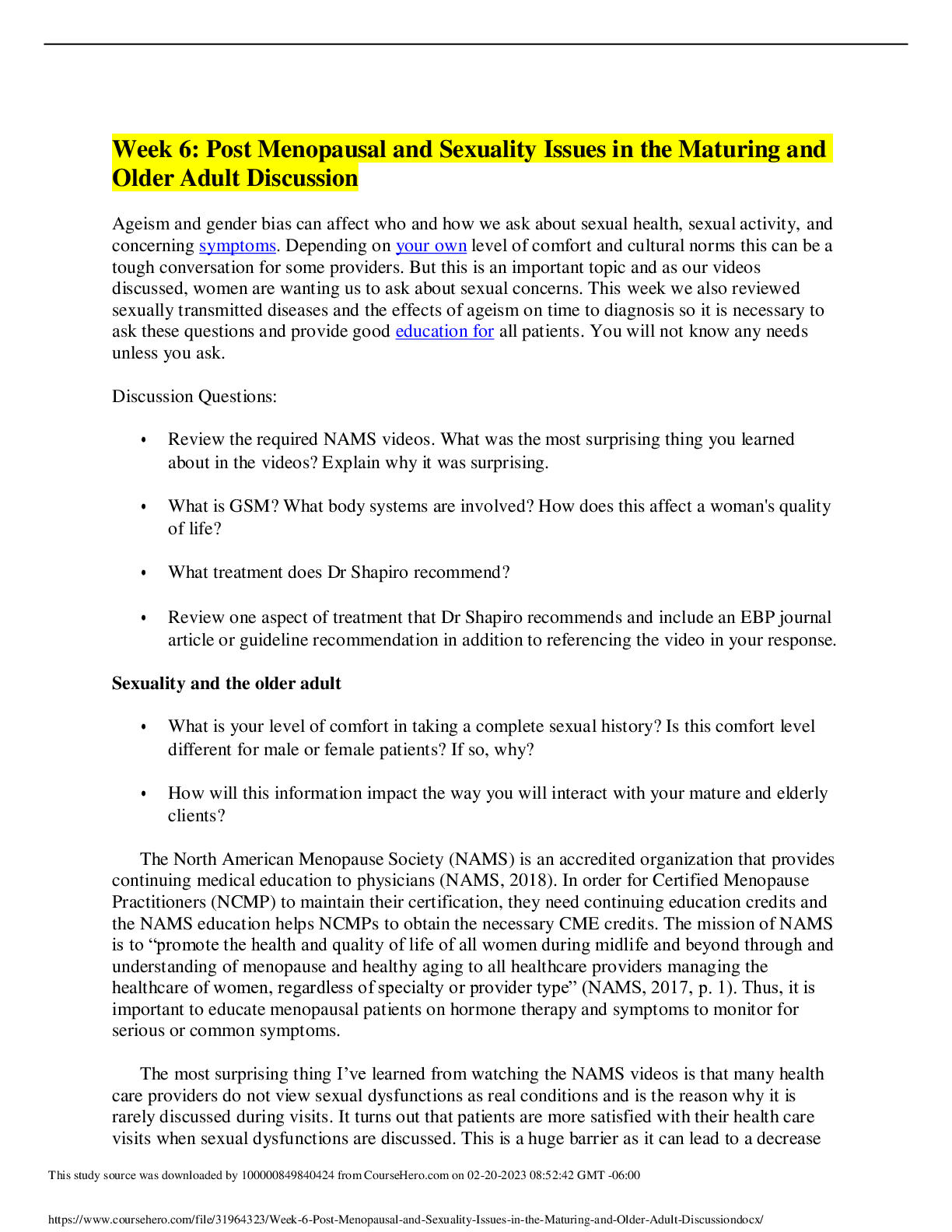
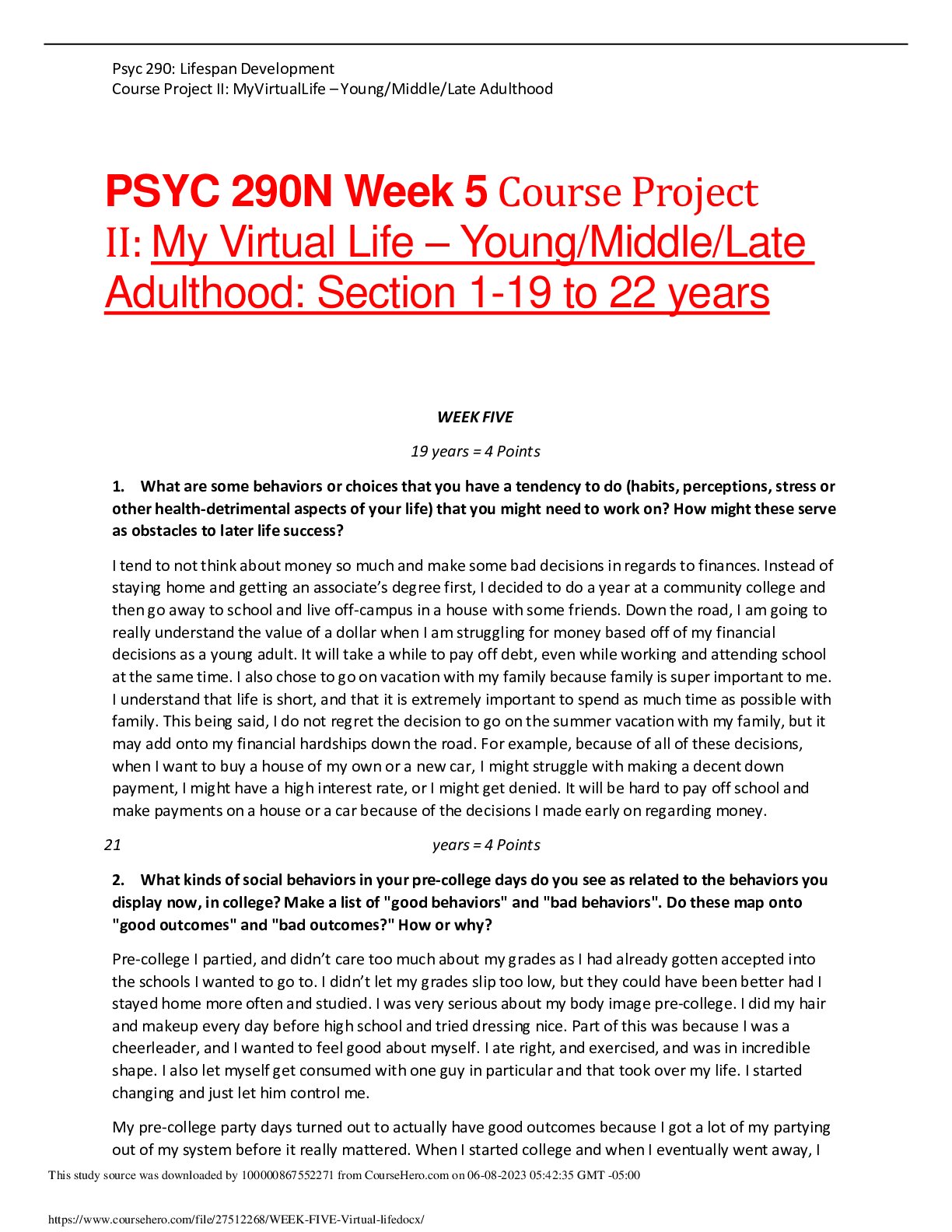
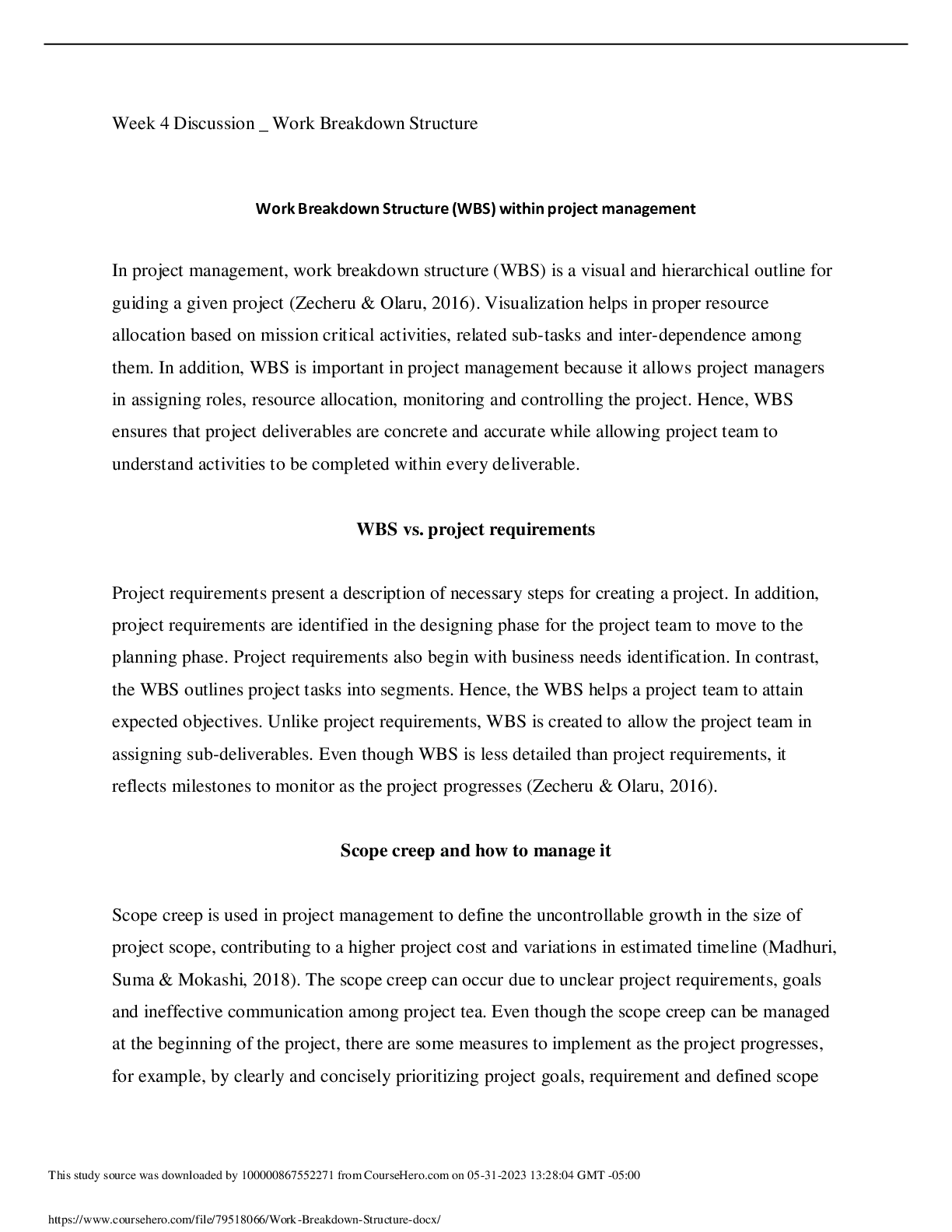

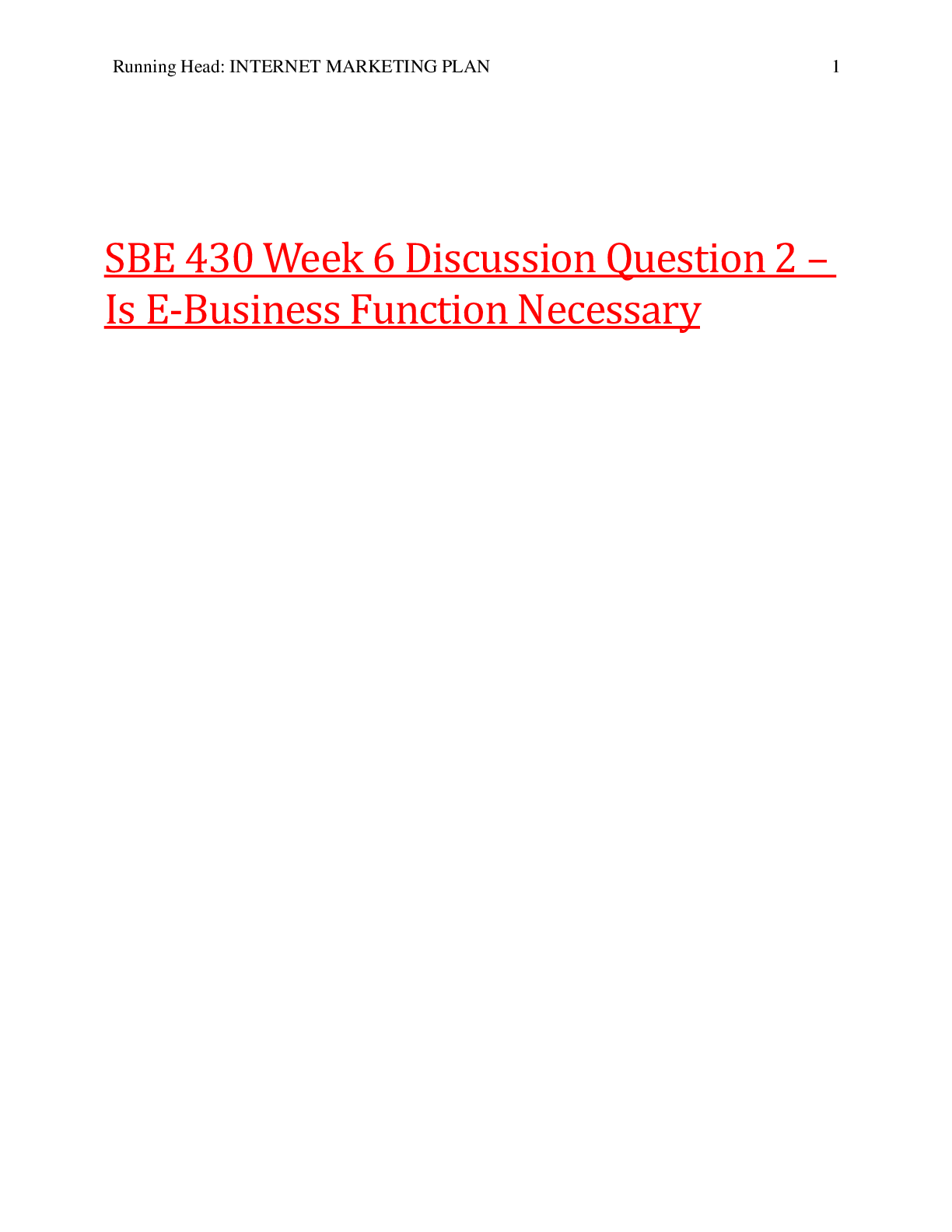
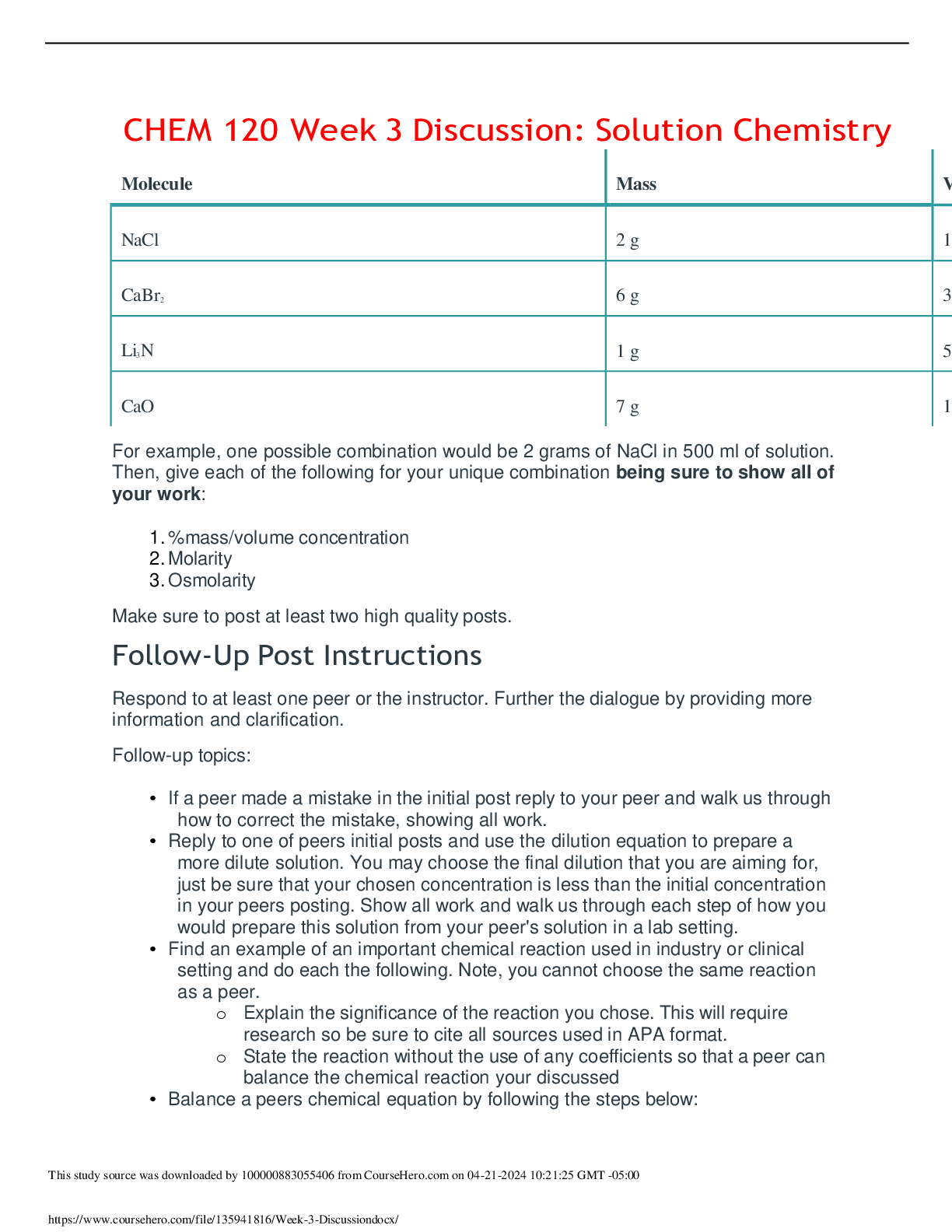
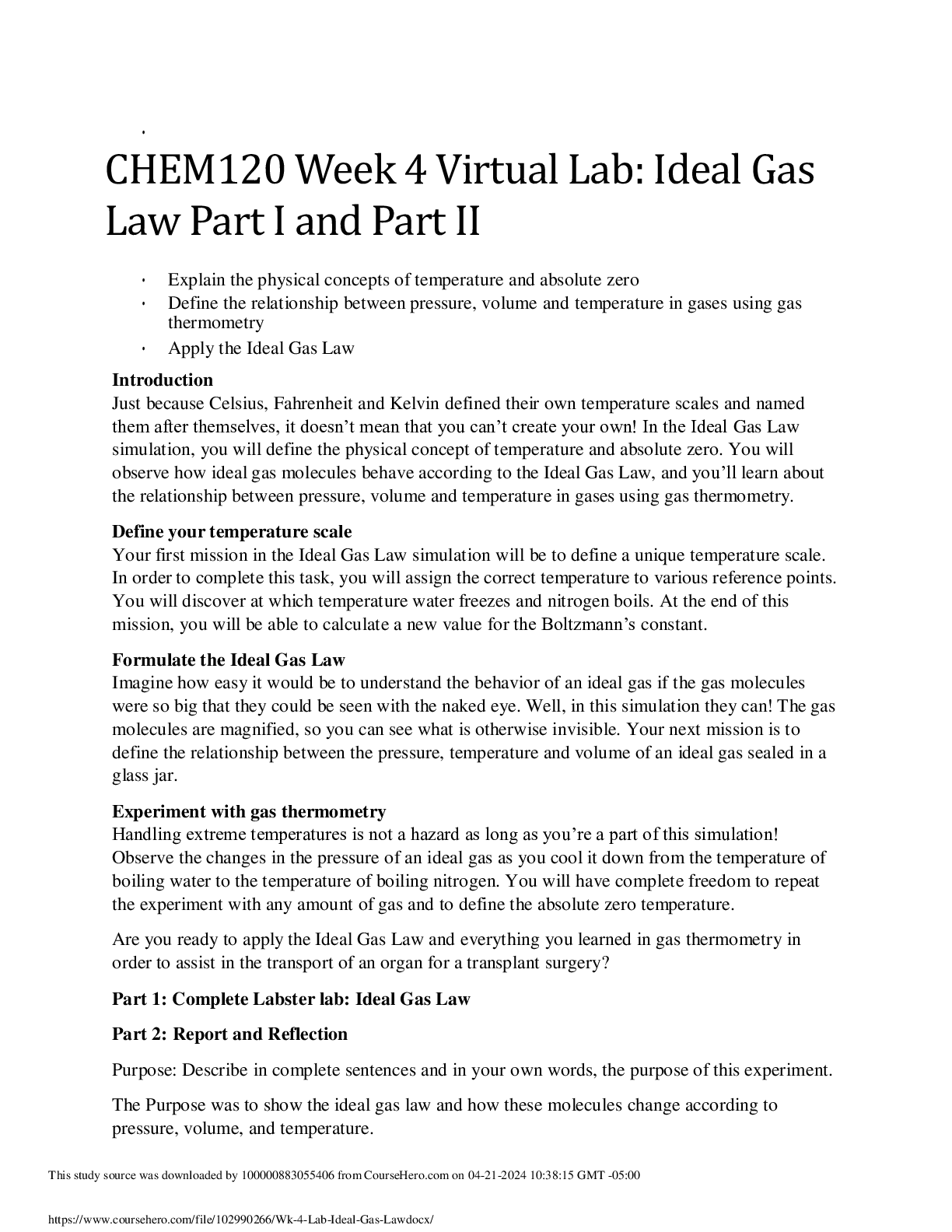


.png)
